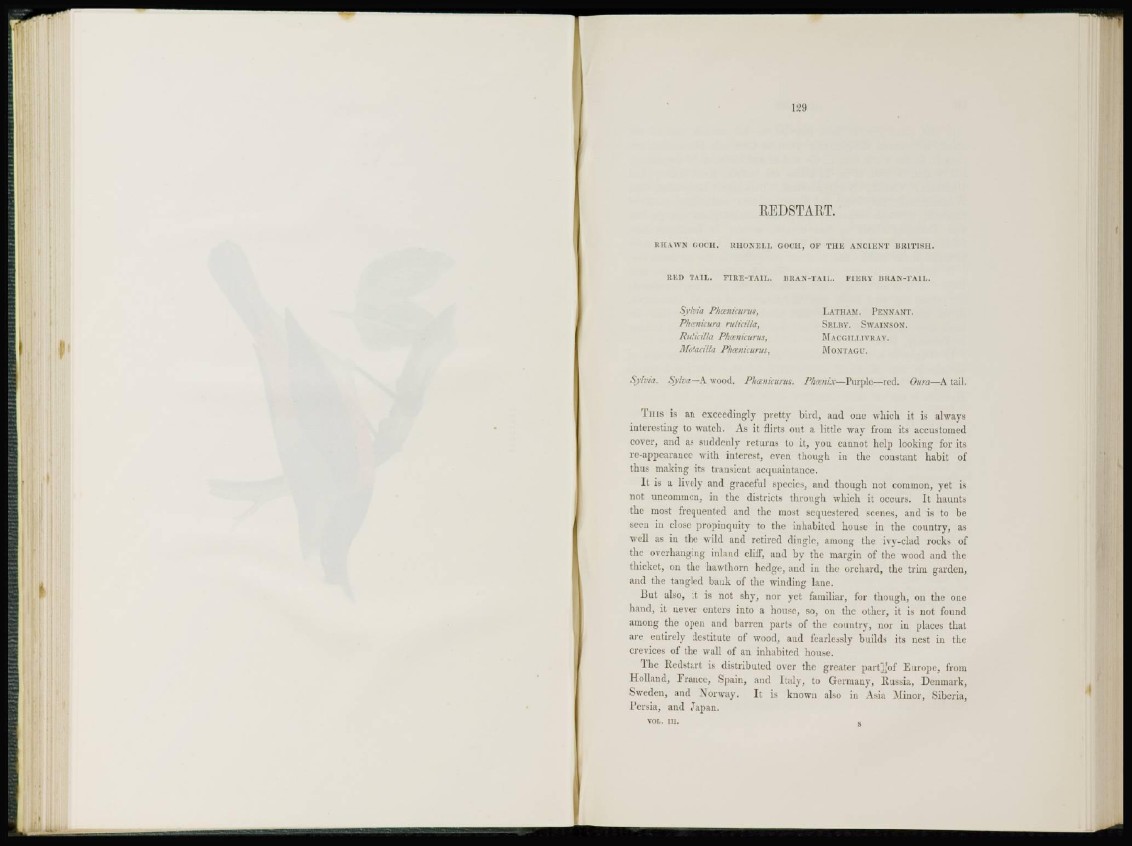
REDSTART.
RHAWN GOCH. RHONELL GOCH, OF THE ANCIENT BRITISH.
RED TAIL. FIRE-TAIL. BRAN-TAIL, E1ERV BRAN-TAIL.
Sylvia Phcenicurm, LATHAM. PENNANT.
Plmnicura rutuilla, SELBY. SWAINSON.
RiitkUhi Phtrniatms, MACGII.I.IVRAY.
MotaciUa Phocnkurus, MONTAGU.
Sylvia. Sjka—A wood. Phaimcurus. Phanix—Purple—red. Oura—A tail.
T H I S is an exceedingly pretty bird, and one which it is always
interesting to watch. As it flirts out a little wav from its accustomed
cover, and as suddenly returns to it, you cannot help looking for its
re-appearance with interest, even though in the constant habit of
thus making its transient acquaintance.
I t is a lively and graceful species, and though not common, yet is
not uncommon, in the districts through which it occurs. It haunts
the most frequented and the most sequestered scenes, and is to be
seen in close propinquity to the inhabited house in the country, as
well as in the wild and retired dingle, among the ivy-clad rocks of
the overhanging inland cliff, and by the margin of the wood and the
thicket, on the hawthorn hedge, and iu the orchard, the trim garden,
and the tangled bank of the winding lane.
But also, it is not shy, nor yet familiar, for though, on the one
hand, it never enters into a house, so, on the other, it is not found
among the open and barren parts of the country, nor in places that
are entirely destitute of wood, and fearlessly builds its nest in the
crevices of the wall of an inhabited house.
The Redstart is distributed over the greater partj?of Europe, from
Holland, France, Spain, and Italy, to Germany, Russia, Denmark,
Sweden, and Norway. It is known also in Asia Minor, Siberia,
Persia, and Japan.
VOL. Ill, «